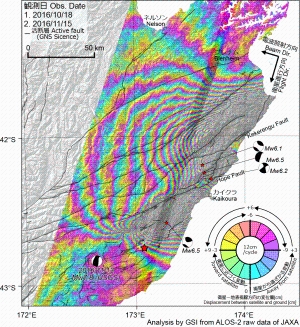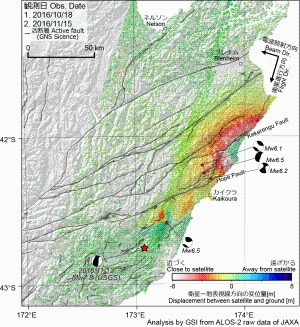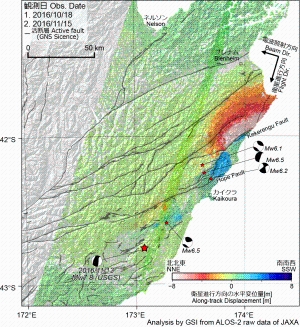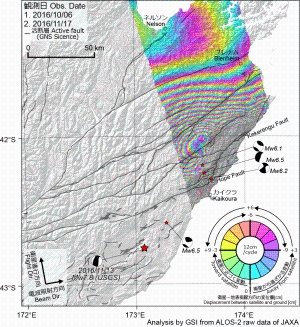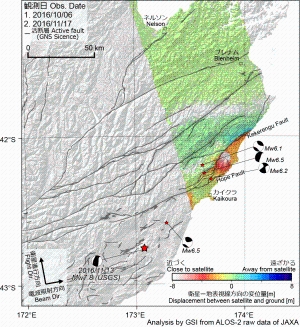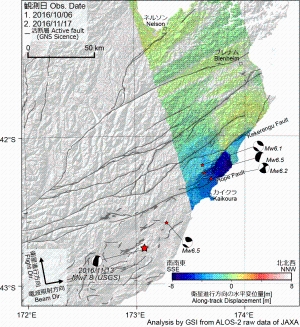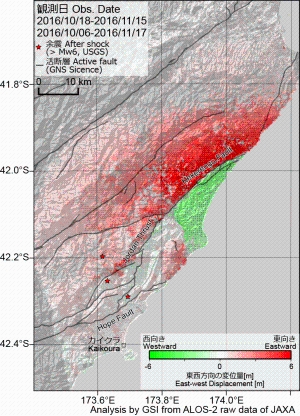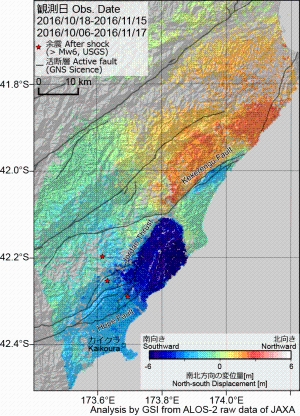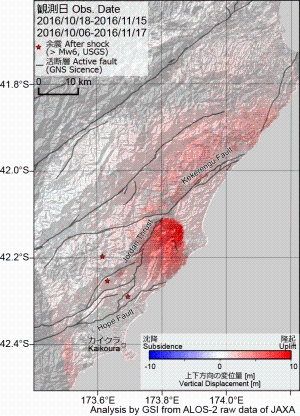The 2016 New Zealand Earthquake: Crustal deformation detected by ALOS-2 data
Crustal Deformation Observed by Synthetic Aperture Radar (SAR)Released: Nov. 17, 2016, Last Updated: Nov. 19, 2016 Japanese version of this page
Crustal Deformation revealed by SAR analysisA large earthquake (Mw 7.8) occurred in New Zealand on November 13, 2016. We applied interferometric analysis and a Pixel Offset method using ALOS-2/PALSAR-2 data to measure the crustal deformation caused by the earthquake, and retrieved a dense three-dimensional deformation field. The results revealed that very complex movements on several faults occurred and the maximum uplift reached ~10 m.
The results obtained from the data are summarized as follows.
Results (InSAR and Pixel Offset)
Fig. 1. InSAR of pair 1
Fig. 2. Range offset of pair 1
Fig. 3. Azimuth offset of pair 1
Fig. 4. InSAR of pair 2
Fig. 5. Range offset of pair 2
Fig. 6. Azimuth offset of pair 2
*1 W: ScanSAR (Normal), F: Fine (10m) (cf. ALOS-2 Project / PALSAR-2 (JAXA)) Analysis by GSI from ALOS-2 raw data of JAXA. These results were obtained through the activity of the SAR analysis working group of the Coordinating Committee for Earthquake Prediction. 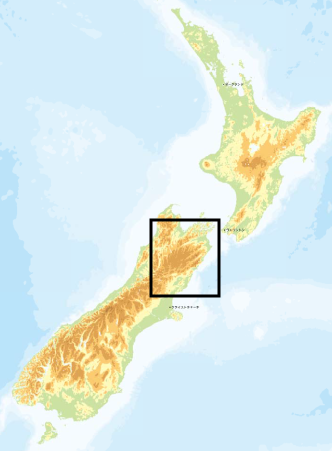 Area of interest Area of interest3D Displacement by Pixel Offset Results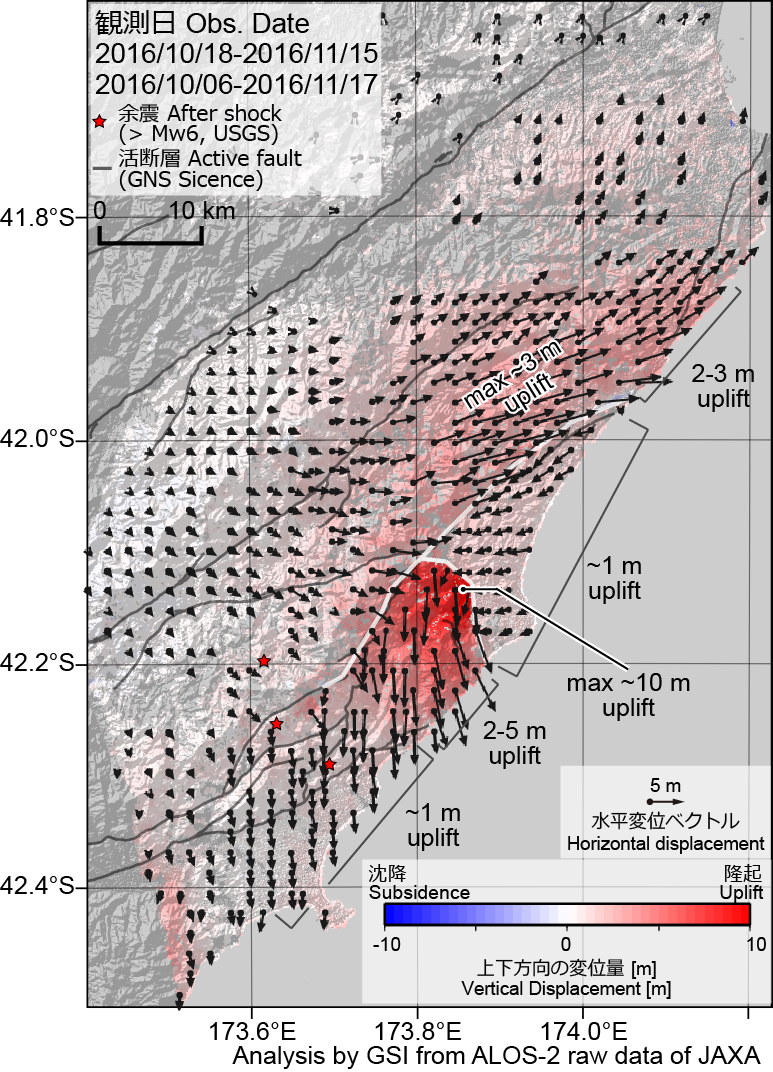 [PNG: 784KB] [PNG: 784KB]Fig. 7. Three dimensional displacement field estimated from the results of Pixel Offset.
Fig. 8. EW displacement
Fig. 9. NS displacement
Fig. 10. UD displacement 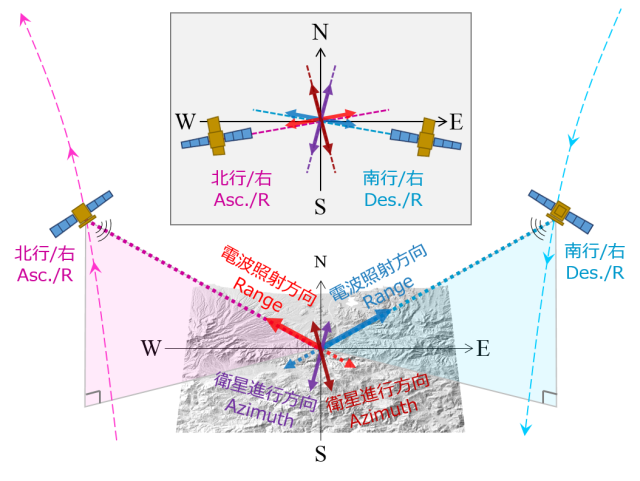 Geometry of 3D analysis by Pixel Offset The 2016 New Zealand Earthquake
SatelliteALOS-2 (Advanced Land Observing Satellite 2) launched by Japan Aerospace Exploration Agency on May 24, 2014
Paper, Report, PresentationMorishita, Y., T. Kobayashi, S. Fujiwara, and H. Yarai (2017), Complex crustal deformation of the 2016 Kaikoura, New Zealand, earthquake revealed by ALOS‐2, Bull. Seismol. Soc. Am., 107(6), 2676-2686, doi:10.1785/0120170143. [html]
Copyrights and CreditsCopyright. Geospatial Information Authority of Japan. ALL RIGHTS RESERVED.
We welcome links from your website to this website. When using materials on this website, we ask that proper credit be given. ContactYARAI Hiroshi : Head of Division
MORISHITA Yu : Researcher 
|


